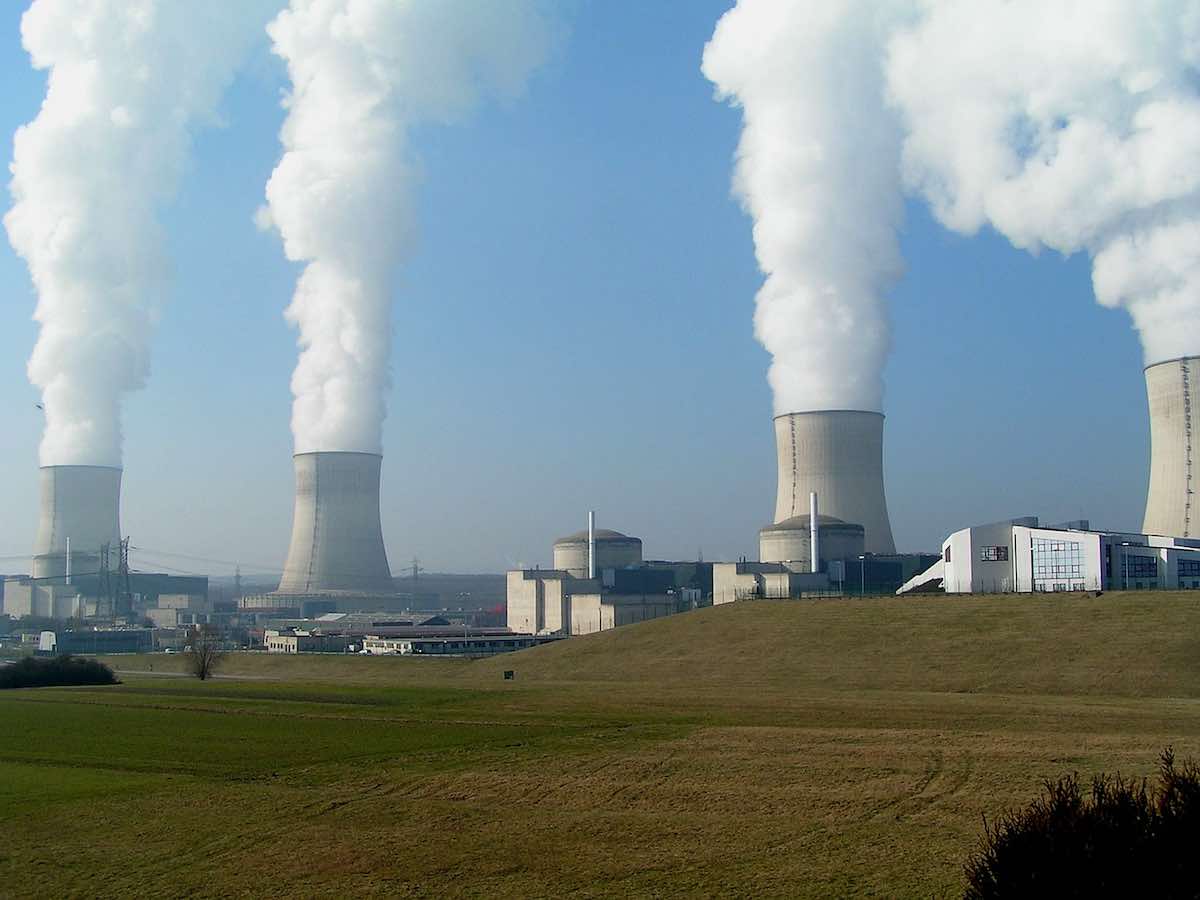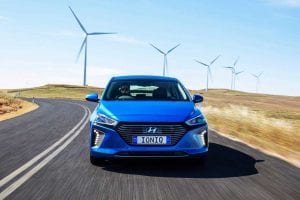The Coalition has announced that it plans to commission seven nuclear power stations by 2050. It has said it would abandon the government’s 2030 target of reducing the nation’s emissions by 43 per cent (compared with 2005 levels). It has also restated its commitment to the ‘net zero by 2050’ objective declaring in a press release:
“If you are serious about meeting our net zero by 2050 emissions commitments, then you must include zero-emission nuclear as part of your energy mix.”
In this paper we investigate how a nuclear power program might help to meet the commitment to net zero by 2050. Electricity sector emissions would need to reach close to zero emissions by 2050 (with a small amount of gas generation remaining).
It’s not possible to eliminate emissions from other sectors (agriculture, industry, transport, waste and land use) completely, which means remaining emissions must be offset with carbon sinks, mainly land-based sequestration and carbon capture at the point of combustion or direct from the air (technologies which have yet to be proven).
Electricity is expected to supply a growing share of Australia’s total energy demand. We assume that electric vehicle (EV) numbers will continue to grow and the electrification of natural gas demand in homes, commerce and industry will continue at the rates currently projected by the Australian Energy Market Operator (AEMO). Extending these trends are essential if Australia is to reach net zero emissions by 2050.
The Coalition is expected to end government support for ‘green hydrogen’ production. In his Budget Reply speech Peter Dutton said: “As a start, we will not spend $13.7 billion on corporate welfare for green hydrogen and critical minerals.”
Energy demand projections
All future energy emissions scenarios depend in the first instance on expected growth in energy demand, and especially electricity demand with the increasing electrification of transport and substitution for gas.
Figure 1 shows projected electricity demand by sector, based on AEMO projections for the east coast National Electricity Market (NEM). (We have added Western Australia and the Northern Territory electricity demand to the NEM and assumed the same demand pattern.) Overall, Australia’s demand for electricity is expected to grow by 64 per cent between 2023-24 and 2049-50.
These projections exclude the electricity produced by rooftop PV that is used on-site rather than exported to the grid. This, combined with the rising efficiency of end-use equipment, reduces the growth in grid supply and so makes it easier to achieve zero emissions from the electricity sector as a whole. The top-most band in Figure 1 represents electricity demand for hydrogen production.
This is removed for the remainder of the analysis on the assumption that it would not proceed without government support (or if it proceeds, proponents would have to build their own renewable generation).

Electricity supply plans
The question of how best to meet electricity demand is the subject of political contestation. In this section we describe three scenarios for sources of electricity supply through to 2050: Labor’s current renewables-based pathway to near net-zero by 2050; the Coalition’s announced nuclear strategy based on building seven nuclear plants by 2050; and, a more realistic scenario for introducing nuclear generation to the grid. We also estimate how fast nuclear plant would need to be built to achieve zero emissions from electricity supply by 2050.
Before we show these, Figure 2 shows the expected decline in electricity capacity from coal fired power stations as coal plants are phased out at the dates assumed by AEMO. This timing includes the life extensions negotiated by the Victorian and NSW governments in 2023 and 2024. We assume that further life extensions are impractical, and that as coal fired power stations age, their average load factor will decline from an actual value of 67 per cent in 2023 to 35 per cent in 2034 and remain at that level until retirement. The last coal plant is expected to be retired in 2050.

Figure 3 shows electricity production needed to meet demand while at the same time reducing fossil fuel generation to 2 per cent of electricity supply 2050. This corresponds closely to the strategy of the Labor government and relies on significant growth in solar PV and wind generation. As coal plants are phased out, the shortfall from renewables is made up by gas generation, but gas is reduced to a small backup role by 2050 when almost all demand is met by wind, large-scale PV and small-scale PV, with a small amount from hydro-power.

The Coalition has announced that:
“A federal Coalition government will initially develop two establishment projects using either small modular reactors or modern larger plants such as the AP1000 or APR1400. They will start producing electricity by 2035 (with small modular reactors) or 2037 (if modern larger plants are found to be the best option).”
There are as yet no commercial designs for small modular reactors (SMR). For the purposes of our analysis, it is assumed that the first AP1000 (a proven design, rated at 1,117 MW electric, MWe) comes online in 2037, the first 300 MWe SMR comes online in 2040 and thereafter generators are commissioned every two years in the sequence AP1000 (1,117 MWe), a second SMR (300 MWe) and then three APR1400 (1485 MWe each).
In practice, this is an unrealistically fast development of a nuclear industry in Australia. Nevertheless, staying with this program, by 2050 there would be 7.2 GWe of nuclear generation in operation. If the load factor were 85 per cent (at the high end for nuclear plant) their combined annual electricity output would reach nearly 54 GWh, approximately 12 per cent of total electricity generation.
It is also assumed that, if elected in 2025, the Coalition would halt new approvals for large scale PV and wind but would allow completion of projects already under construction. These sources would reach their maximum output by 2027 and stay at that level from then on. Small scale rooftop PV would be allowed to continue to grow. As with the Labor strategy, any generation shortfall would have to be made up by gas.
Figure 4 shows the generation mix under the assumptions that meet the Coalition’s announced plans. The introduction of nuclear would limit the growth of demand for other forms of generation. Because large-scale renewables are constrained at the 2027 level the gap, which is much higher than under the renewables pathway, must be made up by gas.
In fact, gas generation would need to supply approximately 39 per cent of electricity supply under the Coalition’s announced plan, while generation from renewables in 2050 would shrink from 98 per cent under Labor’s plan to 44 per cent under this plan. The Coalition’s nuclear plan represents an enormous contraction in the potential of the renewables industries.

The roll-out of nuclear power plants under the Coalition’s announced plan is unrealistically fast because of the time taken to develop a regulatory framework, train a workforce, engage contractors, build the plants and bring them safely into service.
A more realistic, but still optimistic, nuclear rollout program would see the first AP1000 reactor commissioned in 2040 (15 years after nominal commitment) and APR1400s begin operating at 5-year intervals thereafter. This more realistic schedule would result in less nuclear generation by 2050 and so more gas and higher emissions. Figure 5 shows the generation mix under the more realistic nuclear plan.

Implications for achieving net zero by 2050
Clearly, the Coalition nuclear plan would still require a high level of gas generation to meet electricity demand in 2050, even without the development of a hydrogen industry. These emissions would need to be offset, along with emissions from the rest of the economy, which are even harder to abate.
This would require impossible levels of offsetting using carbon sequestration. As a result, net zero emissions from the electricity system (and hence net zero for the economy as a whole) would be well out of reach.
To achieve zero emissions from electricity by 2050 while freezing large scale renewables at the 2027 level would require much more nuclear generation than proposed by the Coalition, as shown in Figure 6. In fact, it would require over four times as much nuclear generation to come online by 2050.
It is clear from this analysis that the Coalition’s announced plan for nuclear power and its continued commitment to net zero emissions by 2050 are nowhere near compatible. Either much more nuclear energy is needed or the commitment to net zero must be abandoned.
We now show that achieving net zero by 2050 through the roll-out of nuclear energy is virtually impossible.

The rates of nuclear power plant deployment under three nuclear scenarios are shown in Table 1. The scenarios are the announced Coalition plan, the more realistic nuclear plan, and the nuclear roll-out required for Australia to attain zero emissions electricity by 2050.
The rates of nuclear deployment are summarised in the lower section of Table 1. They can be compared with the highest historical build rates achieved by mature nuclear countries, shown in the upper panel.
To reach zero electricity emissions by 2050 Australia would need to achieve, from scratch, a better build rate than Japan achieved some time after it had already commissioned its first reactor, with roughly a fifth of Japan’s population and industrial capacity. In fact, for its population size, Australia would need to exceed the highest nuclear build rates ever achieved.
Table 1 Nuclear power commissioning rates to 2050
| Country | First power | Most active | Increase | Build rate |
| reactor online | build period | in MWe | MWe/yr | |
| China | 1993 | 2009-2022 | 43483 | 3350 |
| France | 1962 | 1976-1990 | 51570 | 3680 |
| USA | 1958 | 1970-1990 | 92405 | 4620 |
| Japan | 1966 | 1972-1991 | 30187 | 1590 |
| USSR/Russia | 1971 | 1971-1987 | 18382 | 1150 |
| UK | 1956 | 1976-1988 | 6835 | 570 |
| Announced Coalition plan | 2037 | 2037-2050 | 7199 | 514 |
| More realistic nuclear plan | 2040 | 2040-2050 | 4027 | 366 |
| Nuclear needed for zero emissions | 2037 | 2037-2050 | 30103 | 2150 |
Surplus emissions
By how much would Australia’s emissions from electricity increase as a result of adopting the Coalition’s nuclear plan as opposed to the government’s renewable energy plan? The answer, at least for the period up to 2050 is shown in Figure 7.
The area under each curve shows the emissions into the atmosphere as demand grows and the electricity mix changes. Following the government’s renewable energy plan, Australia’s total electricity sector emissions between 2026 and 2050 are represented by the area under the blue curve.
Under the announced Coalition nuclear plan, the carbon emissions in addition to those from Labor’s plan are represented by the gap between the solid red and blue lines. Electricity sector emissions between now and 2050 would be more than twice as high under the Coalition nuclear policy.
Under a more realistic, slower nuclear rollout the excess emissions would be slightly higher. Even if it were possible to replace fossil fuels with enough nuclear to reach zero emissions from electricity by 2050, emissions in the intervening years would be nearly 54 per cent higher than under the renewables pathway.

Figure 8 shows these data a different way. It shows total projected emissions from the electricity sector with each bar representing the aggregate emissions under the corresponding curve in Figure 7.
The Coalition’s nuclear strategy would increase Australia’s cumulative emissions over the period to 2050 by at least 1,462 Mt CO2-e compared with the renewables pathway This is equivalent to nearly 3.4 times Australia’s total annual emissions(433 Mt CO2-e in 2022).

In conclusion
Our analysis shows that the Coalition’s nuclear strategy, if it met its stated aims, would see nuclear plants account for approximately 12 per cent of total electricity generation by 2050.
The slowed pace of the renewables roll-out implied or stated by the Coalition would result in renewables supplying 49 per cent of total supply (compared with 98 per cent under Labor’s plan) and gas generation supplying approximately 39 per cent (compared with 2 per cent under Labor’s plan). It would have a severe negative impact on the renewables industries, but would be a major boost to the gas industry.
With high continued supply of electricity from gas under the Coalition’s plan, attaining net zero emissions by 2050 would be out of the question. Attaining net zero by 2050 would require four times as many nuclear power plants to be built in the 2040s as the Coalition currently plans.
Under Labor’s renewables plan, Australia’s electricity emissions are expected to decline year on year until they reach almost zero on 2050. Under the Coalition’s plan for nuclear power, a declining emphasis on renewables and an unavoidably greater role for fossil fuels means emissions from the electricity sector in 2050 would be nearly 19 times higher than under Labor’s plan.
George Wilkenfeld is an energy policy consultant who helped set up the National Greenhouse Gas Inventory. Clive Hamilton is professor of public ethics at Charles Sturt University in Canberra. Their new book, Living Hot: Surviving and thriving on a heating planet, has just been published by Hardie Grant.









